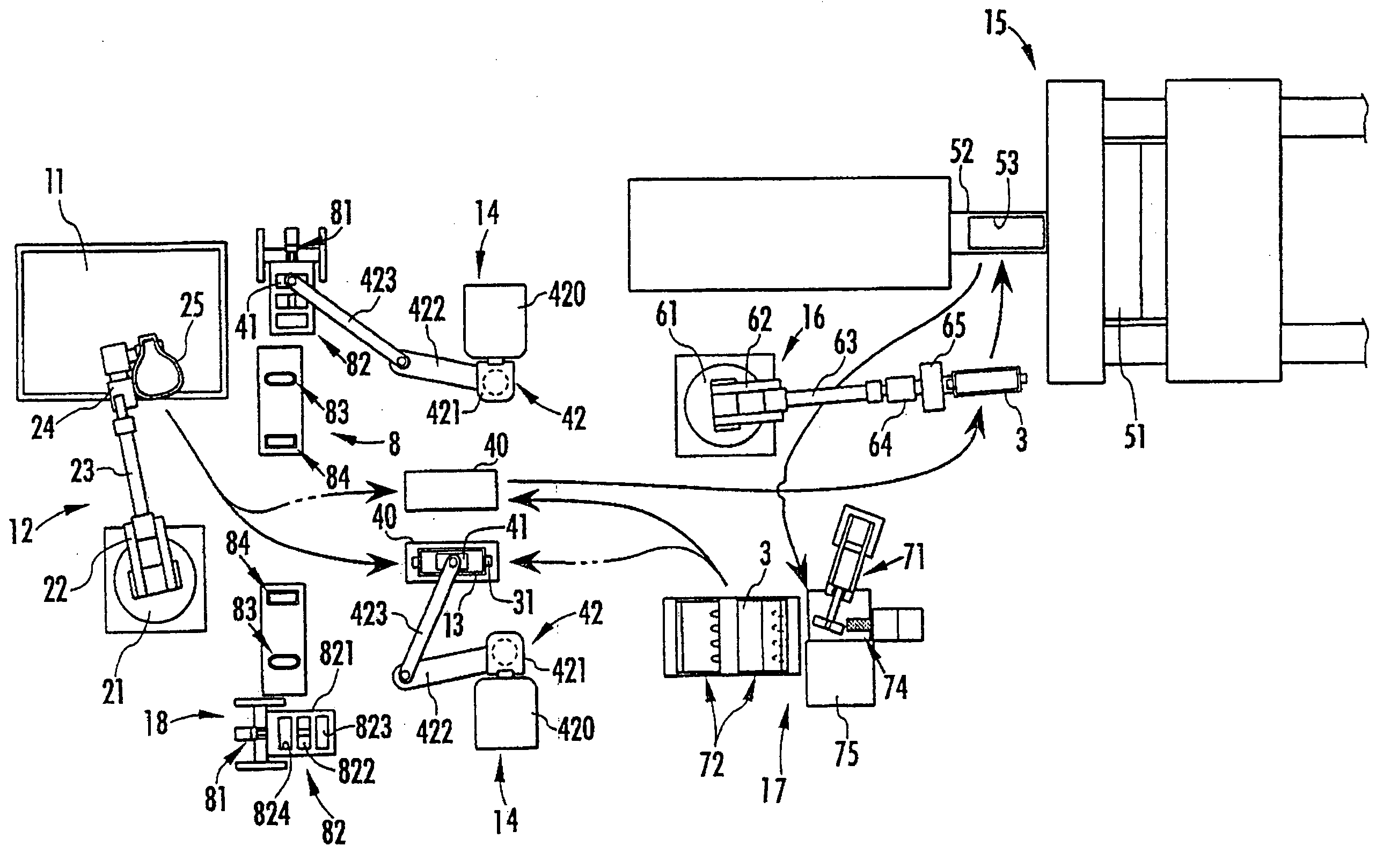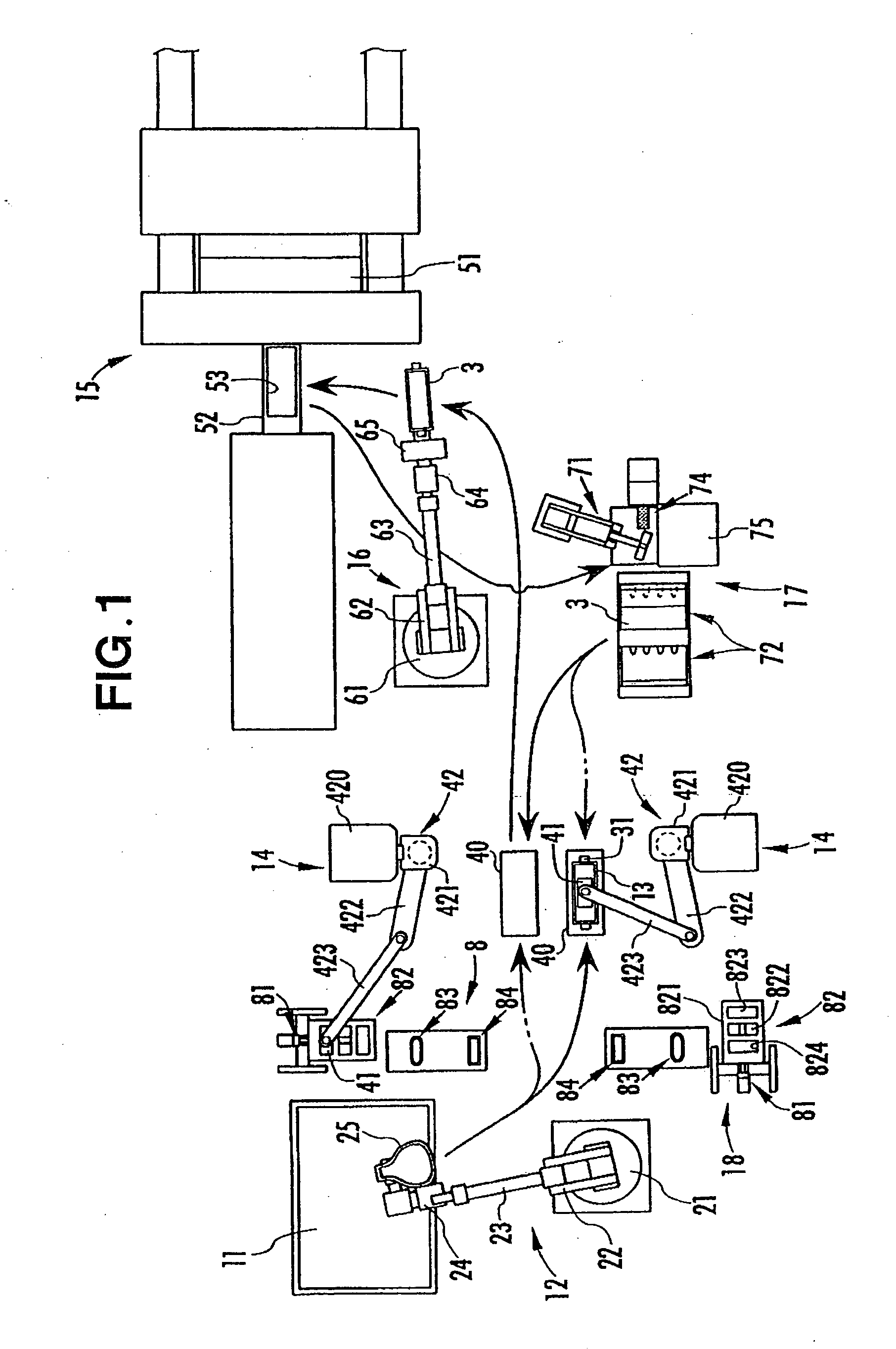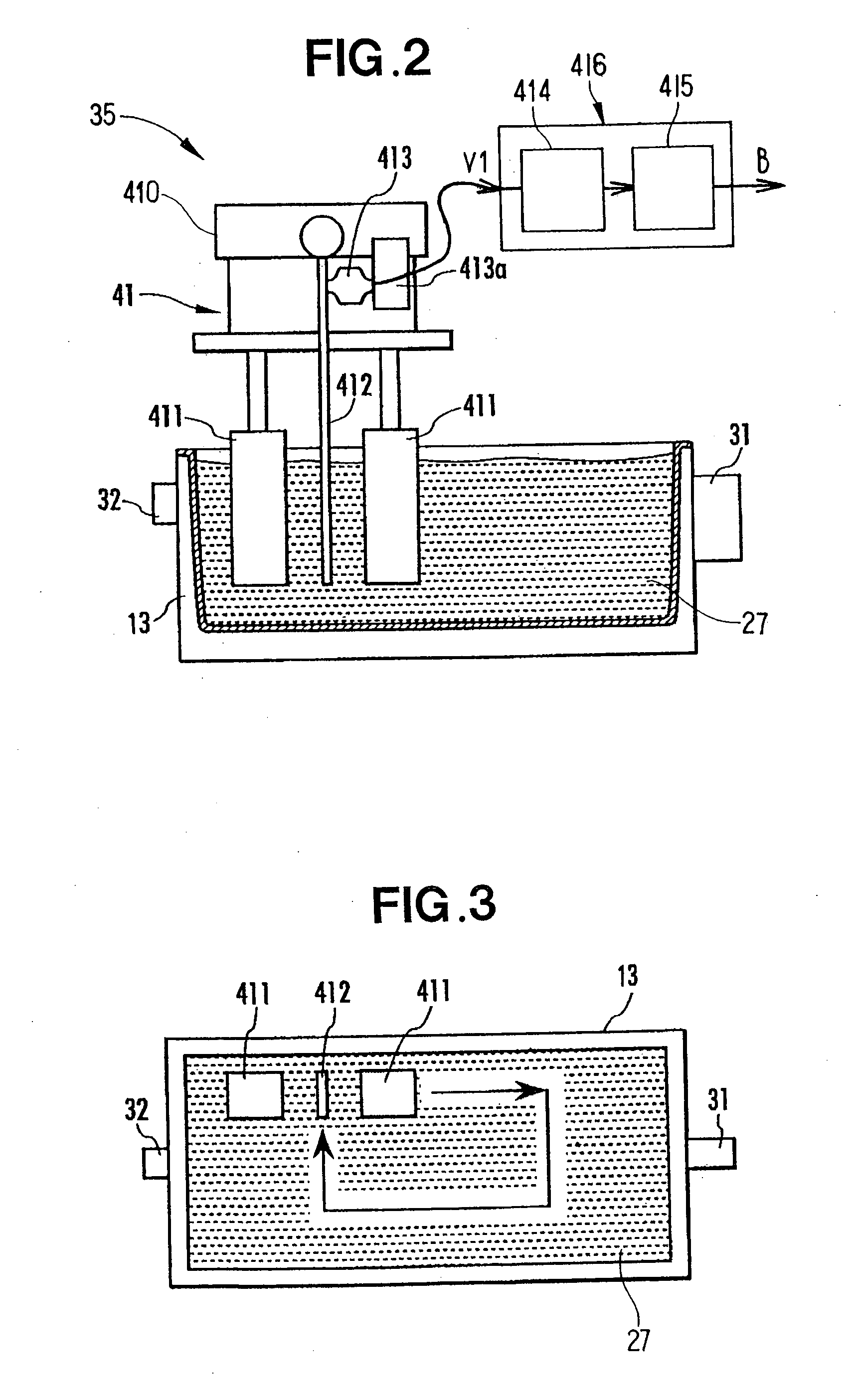Molding of slurry-form semi-solidified metal
a technology of semi-solid metal and die casting molding, which is applied in the direction of moulding machines, manufacturing tools,foundry moulding apparatus, etc., can solve the problems of difficult solidification and blowing off, high frequency of adhered metal remaining in the vessel, and nesting, so as to prevent a fall in runability, reduce the occurrence of nesting, and increase the yield of die casting
- Summary
- Abstract
- Description
- Claims
- Application Information
AI Technical Summary
Benefits of technology
Problems solved by technology
Method used
Image
Examples
Embodiment Construction
[0118]FIG. 1 shows a production line 10 of a molded metal product. This production line 10 has a melt holding furnace 11 for holding a melt consisting of a molten metal such as aluminum alloy; a melt scooping robot 12 for scooping out a predetermined amount of melt from inside the melt holding furnace 11; a vessel 13, rectangular in plan view, for pouring melt scooped out by the melt scooping robot 12; a semi-solid metal producing apparatus 14 for producing semi-solid metal by stirring and cooling the melt in the vessel 13; a molding machine 15 for molding a metal molded product with the semi-solid metal as a starting material; and a carrying robot 16 serving as a carrying apparatus for carrying the vessel 13 from the semi-solid metal producing apparatus 14 to the molding machine 15 and feeding the semi-solid metal in the vessel 13 into the molding machine 15. Also, the production line 10 is provided with a vessel restoring apparatus 17 for carrying out a restoration treatment on th...
PUM
| Property | Measurement | Unit |
|---|---|---|
| temperature | aaaaa | aaaaa |
| temperature | aaaaa | aaaaa |
| immersion time | aaaaa | aaaaa |
Abstract
Description
Claims
Application Information
 Login to View More
Login to View More - R&D
- Intellectual Property
- Life Sciences
- Materials
- Tech Scout
- Unparalleled Data Quality
- Higher Quality Content
- 60% Fewer Hallucinations
Browse by: Latest US Patents, China's latest patents, Technical Efficacy Thesaurus, Application Domain, Technology Topic, Popular Technical Reports.
© 2025 PatSnap. All rights reserved.Legal|Privacy policy|Modern Slavery Act Transparency Statement|Sitemap|About US| Contact US: help@patsnap.com



